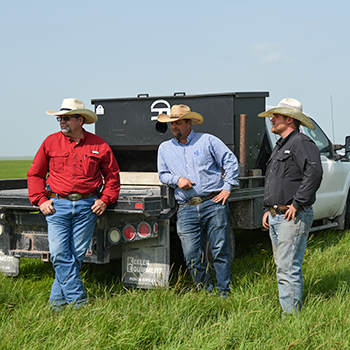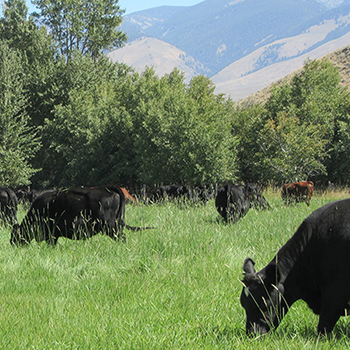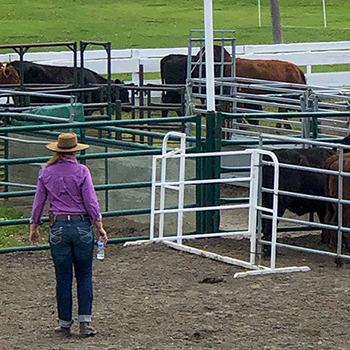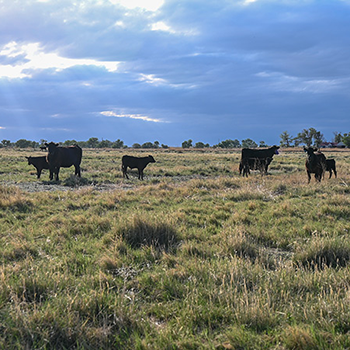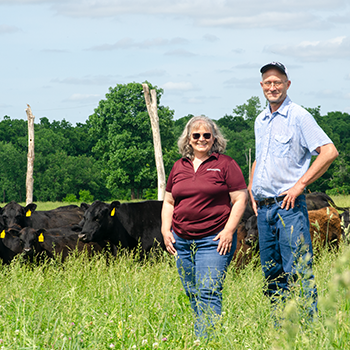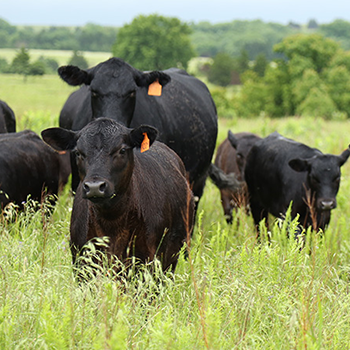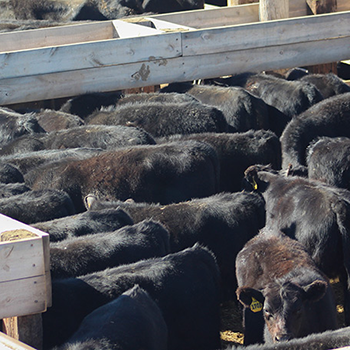Listen to an audio version of the 09-07-22 Marketing articles

Market Closeout
The key to profitability of any cow-calf operation.
Terminal traits have been the dominant selection criteria for the beef industry as a whole for quite some time. There are a couple of reasons for this focus. The first is that maternal traits, by necessity, had always been part of our selection parameters, so there was a lot of opportunity to improve carcass traits when we got the ability to select for them.
Second, growth in pounds is the easiest thing to measure. Because we all get paid by the pound, it is easy to measure the economics of more pounds. Plus, our primary buyers — feedlot and stocker operators — write the biggest checks for our cattle each year. They obviously have no interest whatsoever in maternal traits because they create profits or generate losses based on terminal traits.
Even the Angus Genetic Merit Scorecard® (GMS) focuses exclusively on terminal traits — because it was designed to describe the genetics of cattle going into the feeding and packing segments.
Not surprisingly, the focus of the purebred industry has been on the terminally oriented indexes — like feedlot value ($F), grid value ($G), beef value ($B) and combined value ($C) — as well.
High visibility
Terminal traits are both easy to describe and to see. It is easy for producers to see the direct economic effect they have on profitability. This increased selection pressure on terminal traits has enabled the Angus breed to become the ultimate terminal breed, with nobody able to match our combination of growth and quality.
The economic incentives for growth are relentless, with throughput and capacity utilization being two of the biggest economic drivers of the feeding and packing segments.
Quality, though, has become the real differentiator in the marketplace. The success of the Certified Angus Beef® (CAB®) brand has led to substantial premiums based on quality grade. The shift to higher-quality, higher-marbling cattle has also helped the beef industry to stop our decline in market share.
The higher overall quality becomes, the higher goes beef demand and overall beef prices. Consumers are sending a very definitive market signal: They prefer high-marbling beef products. Even though we have seen significantly increasing numbers of cattle qualifying for upper two-thirds Choice and Prime, we have seen premiums increase right along with supply.
A happier consumer equates to more dollars coming into our industry, and production efficiencies are driven in most cases by pounds, especially in the feeding and packing segments with such high fixed costs.
Female foundation
With that said, the Angus breed became the dominant breed based on the strength of the mama cow. From a cow-calf perspective, nothing is more important than reproductive efficiency. Most economic models say reproductive rate/efficiency is twice as important as growth. The Angus cow is known for her maternal calving ease, fertility, sustained fertility and longevity. Just go to nearly any other beef breed website and you will find that when it comes to making a mama cow, they are all competing to be the appropriate cross with Angus. There are a whole host of other traits that affect the maternal complex: feet and legs, structural correctness, disposition, feed efficiency, and, of course, appropriate levels of milk production and mature size for an environment.
The key
It is an overused analogy, but the cow herd is called the factory, simply because the cow herd is the key to profitability for every cow-calf operation. Your cows are the biggest differentiator from a genetic standpoint, and from an economic one, as well. No segment of our business has higher fixed costs than the cow-calf enterprise, and thus cow efficiency becomes the dominant or key performance indicator for the profitability of a cow-calf operation.
You can ask 100 producers their definition of the ideal cow, and you are likely to get 100 different answers. In part, that is because we expect that mama cow to work in a whole host of varied environments, and we expect her to thrive and survive wherever she happens to live.
The definition also changes based on what type of marketing program her offspring are headed for. Making the “perfect” cow means finding the optimum combination of probably eight to nine maternal traits. Its complexity, coupled with the variety of environments and production systems in which we ask her to operate, only makes it harder to define a clear target.
With that said, creating a maternally oriented cow herd is not rocket science. It basically centers around finding the appropriate level of mature size and milk production to align maintenance requirements with available resources. Then build cows with tremendous fertility and feed efficiencies to reduce costs. We need to keep the “necessity” traits like fleshing ability, udder quality and disposition, and then add as much of the other economically relevant traits as possible.
I don’t think anybody knows how or if all of this sustainability discussion will translate to economics, but the one thing we do know is reproductive efficiency and production efficiency will be two of the biggest drivers. Nothing has a bigger effect on those two traits than the cow herd.
In many respects, the concept of selecting for maternal traits has not changed much in the last 50 years. The big difference is the level of genetics that are now considered to be optimum. Obviously, we have increased milk, mature size and maintenance requirements pretty substantially, but that also is correlated to corresponding production efficiencies.
Measuring maternal traits has always been more difficult. For example, it is difficult to know how much one cow eats in comparison to another. Finding the appropriate level of milk production also involves a lot of trial and error. Once you find the optimum levels for various traits, the rate of genetic progress requires most producers to recalibrate, so it is a never-ending process. It’s one that can best be characterized by the old maxim, “The key is to stay in the middle of the road and avoid the ditches.”
Specificity
The biggest trend or change we are seeing in terms of selecting for maternal traits is specificity. We used to think we can do it all in one package. Technically, that is true, and we have continued to increase early growth while keeping downward pressure on mature size. Yet, ultimately, the tools we have available to us for selecting genetics have improved so rapidly, we are now able to select for maternal and terminal genetics with more specificity than we ever had before.
This has enabled us to make amazing maternal and terminal genetics, but the two are also rapidly diverging. We are seeing an increased focus on selecting genetics to be used in a precision-breeding scenario. We focus maternal genetics to make replacement females and terminal genetics used on those maternal genetics to produce terminally oriented offspring.
The precision-breeding concept is limited in the cattle industry, compared to what we have seen in the pork, poultry and dairy segments, but the trend is well-established and growing. We are likely to see the movement to more precision breeding of both maternal and terminal cattle as competitive as our business is. It is so important to be a low-cost producer while producing a product that fits specific supply chains and consumer target markets.
The title of this edition references “Leading Ladies.” Angelina Jolie and Jennifer Aniston are famous leading ladies, but beauty is still in the eye of the beholder. That is likely to be the case when it comes to maternal genetics for the foreseeable future, as well.
Editor’s note: Troy Marshall is the director of commercial industry relations for the American Angus Association.
